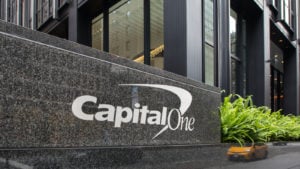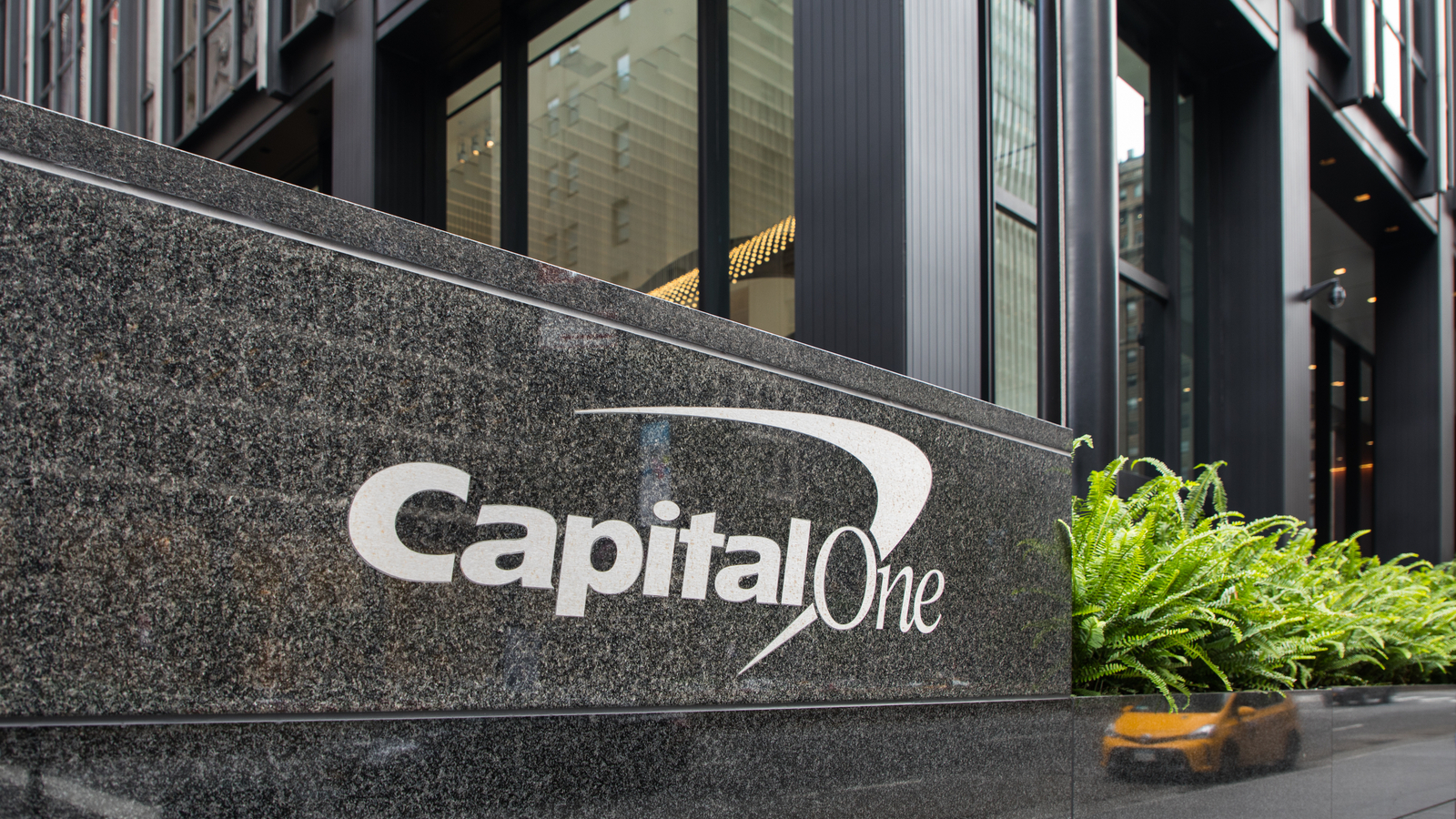There are three sides to a credit card transaction, the merchant, the customer, and the bank. It’s the latter where Capital One Financial (NYSE:COF) stock comes in.

Companies that process transactions experience less volume during a recession. But they make out all right.
Banks, however, have a problem. Everything you put on your credit card is a loan. The merchant gets their money at settlement. The bank only gets its money when you pay the monthly bill. What if they can’t collect?
Capital One shareholders are finding out what happens. Shares collapsed in March, from over $100 to the mid-$40s. They have since recovered just one-third of those gains. COF stock is at $63 with a market cap of $29 billion.
The Cruelest Cut
For the quarter ending in June, Capital One reported a net loss of $918 million and -$2.21 per share. CEO Richard Fairbank praised his company’s digital transformation, but at the end of the day it’s a bank, making loans.
That business isn’t doing well. Capital One had $1.5 billion in charge-offs during the quarter. It anticipates more. It prudently added $2.7 billion to its loan loss reserves. The stock fell 4% on the earnings.
You haven’t seen many of Capital One’s “What’s in Your Wallet” ads on TV because there haven’t been as many. The bank cut its marketing budget during the quarter by 44%, and operating costs by 8%. It wasn’t enough.
Fairbank followed up the earnings release on July 31 with a 75% cut to the dividend for the quarter. It will now be 10 cents per share, not 40 cents.
It’s the first dividend cut since 2009 for what remains the nation’s 11th largest bank. The move should have been expected. Federal Reserve rules limit bank dividends to the average of net income for four preceding quarters. Capital One’s March quarter also showed a loss.
Debt Collector, Hacking Victim
Capital One passed its stress tests, but its customers aren’t passing theirs.
Credit cards are the lowest priority on consumer balance sheets, after home loans and car loans. The bank has started garnishing wages on its debtors. In that it’s well ahead of other lenders, who were told not to go after collateral until this week.
The fraud protections Capital One put in place during good times are now coming back to bite it. Consumers who do pay off their debt may find themselves being investigated.
Capital One’s digital transformation is also a double-edged sword. Fairbank likes to say his bank was a fintech before the term existed. But this made it susceptible to a hack in July, by a former employee of Amazon (NASDAQ:AMZN) Web Services, that exposed 106 million accounts. The hacker breached the bank’s firewall to access account data on Amazon.
In terms of the number of accounts exposed it was the seventh-largest hack in history. It’s the largest to hit the processing industry in over a decade. It was also one of the simplest, taking place entirely outside the bank’s systems.
The Bottom Line on COF Stock
Banks have been poor performers in general during the pandemic depression.
The performance of Capital One stock mirrors that of other banks involved deeply in the credit card business, like JPMorgan Chase (NYSE:JPM) and Citibank (NYSE:C). JPM is down 30% on the year, Citi 37%, Capital One 38%.
Investors remain enamored of fintech. It cuts the cost of doing business. But the business depends on someone having money and being able to collect it. Without money you’re just moving numbers around.
So far, the banks’ problems haven’t hit the rest of the fintech universe. What happens when those companies look in their wallets?
Dana Blankenhorn has been a financial and technology journalist since 1978. His latest book is Technology’s Big Bang: Yesterday, Today and Tomorrow with Moore’s Law, essays on technology available at the Amazon Kindle store. Write him at [email protected] or follow him on Twitter at @danablankenhorn. As of this writing he owned shares in AMZN.
